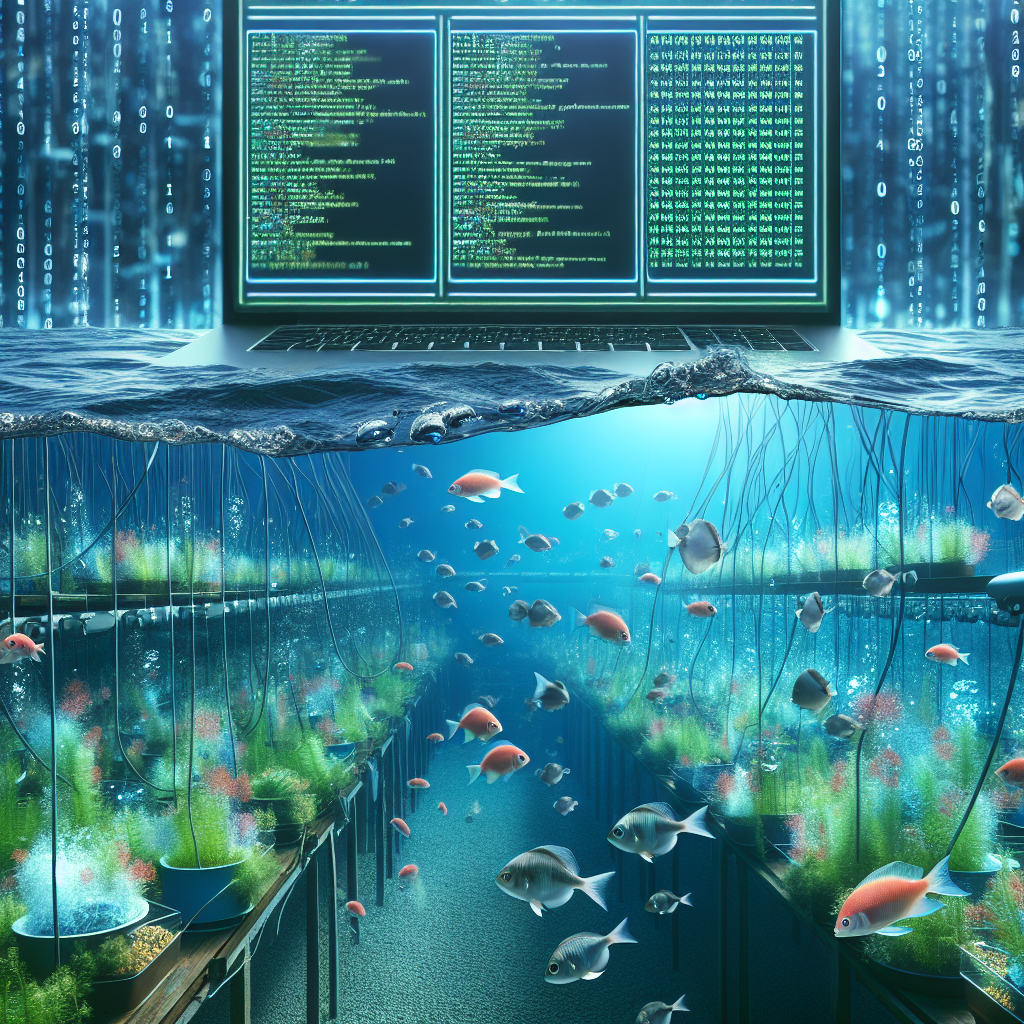Artificial intelligence (AI) has revolutionized various industries, and the aquaculture sector is no exception. With the increasing demand for seafood and the challenges of climate change, overfishing, and pollution, sustainable aquaculture practices are more important than ever. AI-driven solutions have the potential to improve efficiency, productivity, and environmental sustainability in the aquaculture industry.
AI technologies, such as machine learning, computer vision, and predictive analytics, can analyze large amounts of data to optimize farming practices, monitor water quality, and detect diseases in fish. These technologies can help aquaculture farmers make data-driven decisions, reduce costs, and minimize the environmental impact of their operations. In this article, we will explore some of the AI-driven solutions that are being used in sustainable aquaculture practices.
1. Monitoring Water Quality
Water quality is a critical factor in aquaculture, as it directly affects the health and growth of fish. AI-powered sensors can continuously monitor key parameters such as temperature, oxygen levels, pH, and ammonia levels in the water. By analyzing this data in real-time, farmers can detect any deviations from optimal conditions and take corrective actions to prevent fish mortality and disease outbreaks.
Machine learning algorithms can also predict water quality trends based on historical data, weather patterns, and other environmental factors. This predictive capability allows farmers to proactively adjust their farming practices to maintain ideal conditions for their fish and improve overall productivity.
2. Disease Detection and Prevention
Disease outbreaks can have devastating effects on aquaculture farms, leading to significant economic losses and environmental damage. AI-driven solutions can help farmers detect diseases early and implement timely interventions to prevent their spread.
Computer vision technology can analyze images of fish to identify symptoms of diseases such as lesions, discoloration, or abnormal behavior. By monitoring fish health on a regular basis, farmers can quickly spot any signs of illness and take appropriate measures, such as isolating infected fish or adjusting feeding practices.
In addition, AI algorithms can analyze data from sensors and cameras to detect changes in water quality that may indicate the presence of pathogens or harmful bacteria. By integrating these insights with disease models and historical data, farmers can develop targeted strategies to prevent disease outbreaks and protect their fish.
3. Feed Optimization
Feeding accounts for a significant portion of the operating costs in aquaculture farms, and optimizing feed efficiency is crucial for sustainable farming practices. AI-powered algorithms can analyze various factors, such as fish size, growth rates, water temperature, and feeding behavior, to determine the optimal feeding schedule and diet for each fish species.
By using predictive analytics, farmers can forecast fish growth and adjust feeding practices accordingly to minimize waste and reduce environmental impact. AI can also monitor feed consumption in real-time and automatically adjust feeding rates to ensure that fish receive the appropriate nutrition without overfeeding.
4. Aquaculture Management
AI technologies can streamline the day-to-day operations of aquaculture farms by automating routine tasks, such as monitoring equipment, controlling water flow, and tracking inventory. By integrating sensors, drones, and robotics, farmers can remotely monitor their farms, collect data, and make informed decisions without the need for manual intervention.
AI-driven aquaculture management systems can also optimize resource use, energy consumption, and waste disposal, leading to greater efficiency and sustainability. By analyzing data from multiple sources, such as weather forecasts, market demand, and regulatory requirements, farmers can optimize production schedules, reduce costs, and minimize environmental impact.
Frequently Asked Questions (FAQs)
Q: How can AI help improve the sustainability of aquaculture practices?
A: AI technologies can analyze large amounts of data to optimize farming practices, monitor water quality, detect diseases, and automate routine tasks. By using AI-driven solutions, farmers can make data-driven decisions, reduce costs, and minimize the environmental impact of their operations.
Q: What are some examples of AI-driven solutions in aquaculture?
A: Some examples of AI-driven solutions in aquaculture include water quality monitoring, disease detection and prevention, feed optimization, and aquaculture management. These technologies can help farmers improve efficiency, productivity, and sustainability in their operations.
Q: How can AI help prevent disease outbreaks in aquaculture farms?
A: AI-powered sensors, cameras, and algorithms can detect early signs of diseases in fish and water quality. By analyzing data in real-time, farmers can take proactive measures to prevent disease outbreaks, such as isolating infected fish, adjusting feeding practices, or implementing biosecurity measures.
Q: What are the benefits of using AI in aquaculture?
A: The benefits of using AI in aquaculture include improved productivity, reduced costs, better resource management, and minimized environmental impact. AI technologies can help farmers optimize farming practices, make informed decisions, and adapt to changing conditions in a rapidly evolving industry.
In conclusion, AI-driven solutions have the potential to transform sustainable aquaculture practices by improving efficiency, productivity, and environmental sustainability. By leveraging the power of AI technologies, farmers can monitor water quality, detect diseases, optimize feed efficiency, and automate routine tasks to ensure the health and well-being of their fish and the long-term viability of their operations. As the aquaculture industry continues to grow and evolve, AI will play a crucial role in driving innovation and sustainability in this important sector.

